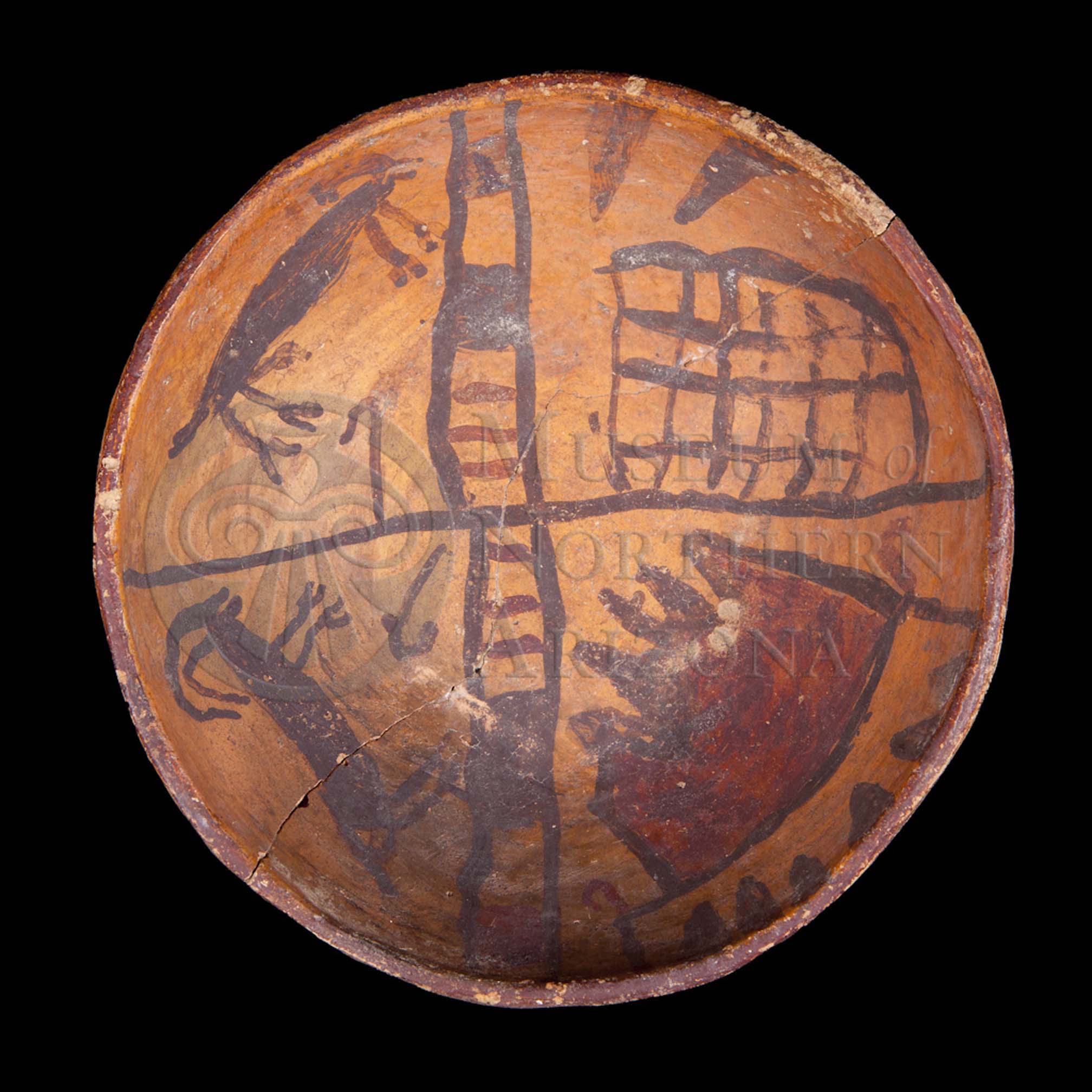
Payupki Polychrome bowl from the Museum of Northern Arizona collections. Click the image to open the Payupki Polychrome gallery.
Payupki Polychrome, a type of Polacca Yellow Ware made on the Hopi Mesas in Arizona during the historic period, has three varieties: A, B, and C. These are differentiated by design layout, slip, and design motifs.
Archaeological Culture: Ancestral Puebloan, Hopi
Date Range: A.D. 1625-1825 (per Kelley Hays-Gilpin, Northern Arizona University).
Construction: By coiling.
Firing: In an oxidizing atmosphere.
Core Color: Bright yellow.
Temper: Temperless, or very small quantities of fine quartz sand.
Surface Finish: May have a thin wash; smooth to polished; Variety C has a thin white slip.
Surface Color: Orange, yellow, and cream, depending on slip.
Forms: Bowls, jars, ladles.
Decoration:
- Paint: Pale red, red, or dark red; black (matte).
- Pigment: Mineral and organic.
- Design: Rims painted red or dark red, and bases often red-slipped; Variety A: Jar layouts are always zonal; bowl layouts variable; feather motifs common, followed by S-shaped frets with terrace, step, or straight terminations; other elements and motifs: split triangles, running diamonds, hourglasses, stacked panels, open terraces, stepped elements, and fringed aprons; no Spanish motifs. Variety B: Jars and stew bowl layouts are usually zonal; bowl layouts are usually radial or manifold; open terrace and fringed apron motifs common, as are Spanish motifs such as the fleur de lis, plant motifs, and realistic zoomorphs. Variety C: thin white slip; designs common to Variety A and Variety B.
Comparisons: Variety A lacks the Spanish motifs common to San Bernardo Polychrome. Payupki Polychrome is similar to Puname Polychrome in jar form, use of double framing lines, slit feathers, stipple fill, and densely compact designs, but Payupki Polychrome is more condensed and complex in its bounded zonal layouts. Ashiwi Polychrome is similar in design elements, motifs, and layouts, but differs in vessel form.
Compiled from the following sources:
Colton, Harold. (1956) Pottery Types of the Southwest. Museum of Northern Arizona Ceramic Series No. 3. Flagstaff, Arizona.
Copeland, Kathryn E. (2012) Payupki Polychrome and Ethnogenesis in Post-Pueblo Revolt Hopi Society. Master’s Thesis, Department of Anthropology, Northern Arizona University, Flagstaff.
Compiled by:
April Peters and Meghann M. Vance, Northern Arizona University Anthropology Laboratories.
